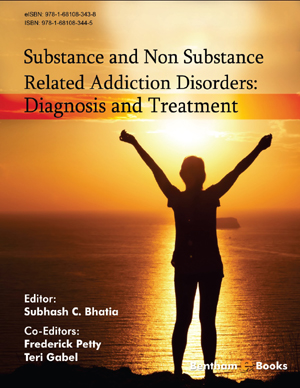Abstract
PCP is highly lipophilic dissociative anesthetic and a hallucinogen. This has been available since early 1950s. Its recreational use started in 1960’s. It is smoked, snorted or consumed orally. PCP works through NMDA receptor antagonism as well as through direct and indirect dopaminergic effects leading to psychosis. Intoxication with low to moderate dose produce numbness in the extremities, unsteady gait, slurred speech, bloodshot eyes, horizontal, vertical or rotator nystagmus, tachycardia, hypertension, elevation of body temperature, shallow breathing, dry skin, loss of balance, muscle rigidity, agitation, aggression false sense of invulnerability and superior strength leading to daring acts like jumping off of high building. A moderate dose may produce analgesia and anesthesia. High dose may cause drop in blood pressure, heart and respiratory rate, seizures, coma and death. The presence of nystagmus may assist in differentiating PCP psychosis from other causes of psychoses.. Long-term effects of PCP may include “flash-backs”, similar to LSD, persistent speech problems, memory impairment, chronic anxiety, depression or psychosis. There is no specific PCP antagonist medication. Supportive care in an environment of reduced sensory stimulation, urine acidification, and sedation with benzodiazepines is recommended. For patients with psychosis antipsychotic medication may be warranted. Psychosocial interventions add significant value.
Keywords: Angel Dust, Dissociative Anesthetic, NMDA Receptor Antagonist, PCP, Phencyclidine, Psychotomimetic drug.






















